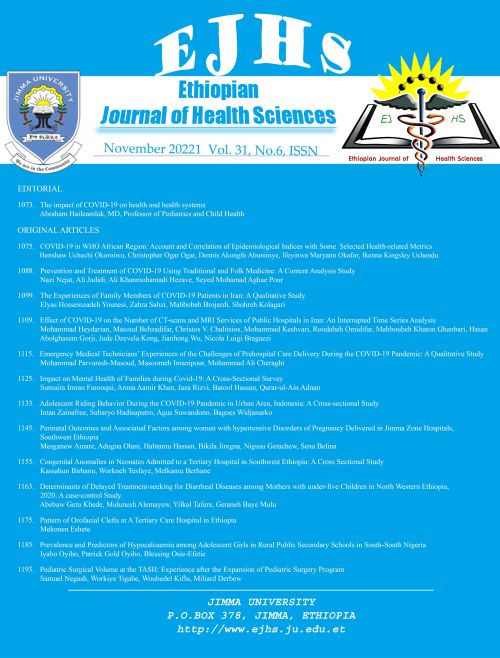Main Article Content
Prevalence of Ventriculostomy Related Infections and Associated Factors in Low Income Setup
Abstract
BACKGROUND፡ Ventriculostomy, a lifesaving and emergency procedure, is used to address raised intracranial pressure. In resource limited set-up like Tikur Annbessa Specialized Referral Hospital, properly designed closed system for ventriculostomy is not available; a device made with sterile pediatric nasogastric tube connected to urine bag is used.
METHODS: Institutional based retrospective cross-sectional study conducted on 93 patients with ventriculostomy from January 1, 2009 to June 30, 2018. Ventriculostomy related infection risk described in descriptive statistics and Binary Logistic Regression analysis.
RESULTS: The prevalence rate of Ventriculostomy related infection is 25.8% at Tikur Annbessa Specialized Referral Hospital. Identified risk factors: Ventriculostomy stay for five or more days (AOR=7.676, 95% CI: 1.424, 41.367) and cerbro-spinal fluid leak (AOR=4.592, 95% CI: 1.279, 16.488). Ventriculostomy
manipulation showed association on bivariate analysis. K.Pneumoniae (34.6%) and Acinetobacter spp. (30.8%) identified as the main organisms. They were sensitive to combined ceftazidime and vancomycin in 19.2% and meropenem in 42.3%. Based on Tängdén’s criteria, 11.8% of patients died of Ventriculostomy related infection while 43% of the patients died in total. Mortality from Ventriculostomy related infection is 45.8% once diagnosed.
CONCLUSION: The prevalence rate of Ventriculostomy related infection is 25.8% at Tikur Annbessa Specialized Referral Hospital. The duration of external ventricular drain and Cerebrospinal fluid leak are identified risk factors. Ventriculostomy related infection is responsible for one third of mortality related with external ventricular drain. The remaining two third exact causes are not known.






